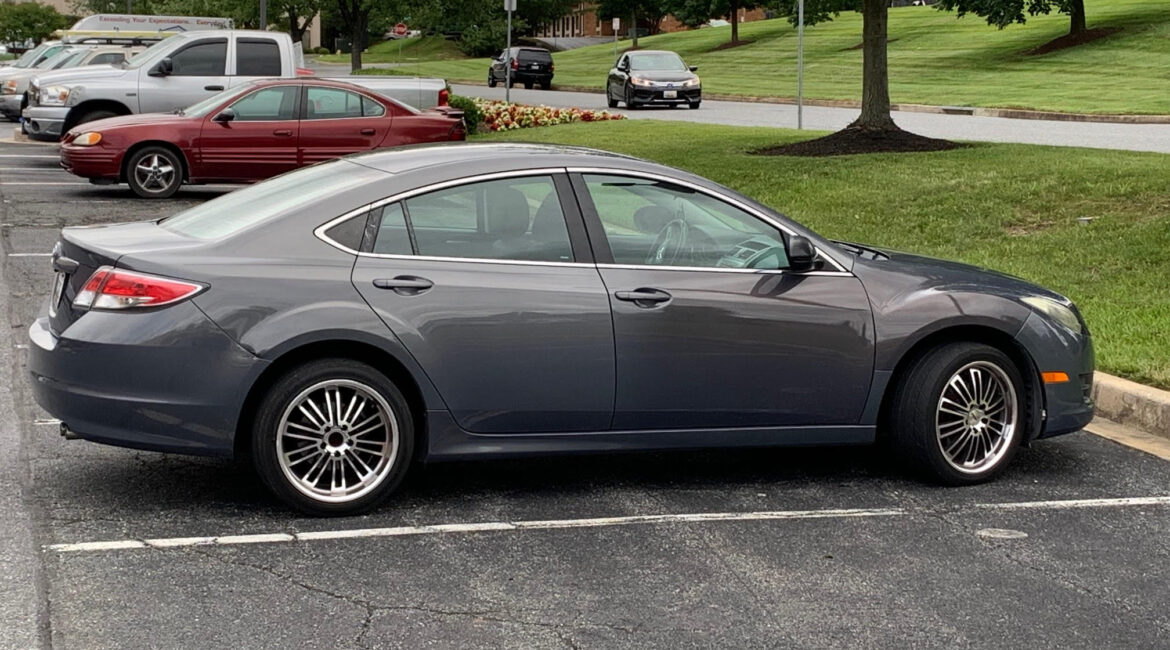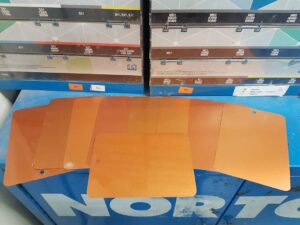It’s both a blessing and a curse for most body shop professionals to be able to spot a bad paint match on a car. They can do this at a parking lot, intersection, or even just driving by on the street. But when you know what to look for, you will be surprised at just how many cars have had bad painting jobs.
You’re probably wondering why that is. Well, simply put, it’s really hard to have a precise match when it comes to painting your car. In fact, if a body shop guarantees a 100% perfect paint match, they aren’t telling you the truth. They’re just after your business and are willing to say whatever to get your money. That’s why we do something known as paint blends. This helps technicians to feather in the new paint to the existing paint.
Not even car manufacturers can achieve a 100% paint match.
Have you ever noticed how your bumper cover is a slightly different shade from the rest of your car? Go look at where the cover meets the fender and look at it in different lighting conditions. You’re sure to see a difference.
Rest assured though, we at 3D Collision Centers can get extremely close to a near perfect match. We have computerized matching technology to help us match the color. These are different from what you’d find at the local hardware store.
Each car has a unique paint code on a label on the door or sometimes even in the trunk. We typically start there. However, matching paint on a car is not as simple as entering the paint code into the computer and mixing up paint. Since the paint work is the only part of a collision repair you see every day, it’s important for you to know a little bit about paint matching, and how we get a match here at our shop.
Three Basic Ingredients in Automotive Paint
- Resin
- Pigment
- Solvent
The resin is the component that holds together the pigment in suspension, provides adhesion to the applied surface, and is what determines the quality and paint durability.
The pigment comes in a power form similar to concrete. A typical aftermarket automotive paint mixing system includes around 100 colors or toners to be able to mix formulas, including metallic and pearl paint colors.
The solvent is what provides the transferability. Without it, the paint would be too thick in viscosity to transfer from container to container.
Prior to the mid-1980s, the average vehicles had factory single stage paint. It would be a major problem with trying to match metallic colors, especially since single stage metallic paint is one layer combined with the gloss resin, pigment, metallic, and solvent. The painter only had four coats to achieve full coverage and layout the metallic in a uniform matter, by dusting light coats and maintaining an acceptable gloss. It would be a tough process of the painter moving fast and working with a proprietary system to get the desired look.
Achieving the desired look
Modern paint is typically a three-layer system of primer, base color, and clear coat. Some newer or specialty finishes even have a fourth coat, called a mid-coat, that is a tinted clear coat designed to give extra depth to the finish.
When we match paint, we are looking to get those color coats as exact as possible, as the clear coat doesn’t affect the color match.
How do we get color match at 3D Collision Centers?
Now that you know about the three basic ingredients and the application process of automotive paint, here’s what you need to know about what happens to the color during the application process.
Auto paint colors are a mixture of pigment colors and metallic sizes, including pearls. The paint code on your car’s paint label will give you the color name and code. This will pull up in our system as the “factory standard.” The factory standard is only just the start. The factory standard also has anywhere from 3 to 7 different shades known as, “variants.”
This is where the artistry of the painter comes out as they now have to do “spray outs.” A spray out consists of painting a little of each shade on a series of cards and holding it up to the car to match the version of the factory color that is on your car. At each of our locations, we might even use a sun gun to replicate the true spectrum of the sun to select the correct shade. A sun gun replicates what the color looks like when in the sun. The fluorescent lighting in the paint booth or the shop can affect what the painter sees.
Example of a spray out
Why do car manufacturers have so many variances?
Most car manufacturers have three major paint suppliers. The manufacturer decides on a standard color for production and submits a painted sample to their suppliers. The paint manufacturer then produces a formula for the “standard sample” and is allowed a wiggle room of plus or minus 5% when they deliver the paint.
Problem is: there can be up to a 5% difference in shades of the same blue metallic standard color, depending on if you’re in the west coast or east coast. This is the first problem when it comes to paint matching. Holding them up side by side and they’ll look like two different colors. This is the reason why paint manufacturers have a standard formula, followed by two alternates. If these alternates aren’t available, then the painter in the body shop will mix the standard formula and tints it accordingly.
The second reason for variances in paint colors is the metallic color applications. Nowadays, metallic colors are classified into seven different categories. The metallic colors will control how light or dark a color is, similar to what white will do to a pastel color. This can be from temperature, fluid tip sizes, paint film thickness, flash off time between coats, humidity, speed of spray gun, and if it’s a metal or plastic surface type.
Keep in mind
The longer it takes for the paint to dry, the darker the color will be. But after approximately three years of UV sunlight absorbing some of the pigments, your car will look lighter. No exceptions. Reds will turn pinkish or more orange, and blues will shift to a greener shade.
Auto body shops have to match the oxidized color, in addition to the original manufacturer’s color (known as OEM). The texture (aka “orange peel”) also has to match the original finish for it to look pre-accident condition. This can be accomplished using the proper spray gun, polishing equipment, and an experienced painter.
Why trust us for your vehicle paint needs
All of our technicians are Gold Class I-CAR certified, which is the highest level of training technicians can receive. We only use leading paint methodology systems and premium quality paint for your car. This ensures it looks better than ever and gives it that real luxury look.
We are Driven. Dynamic. Dedicated. to giving you the highest quality of auto body paint and repair needs that Pennsylvania has to offer. We have 7 different locations across Montgomery, Chester, and Delaware counties.
For a list of our different locations and the direct number, click here. Otherwise, you can give us a call at (877)-692-7776.
We look forward to hearing from you and showing you the 3D difference!






